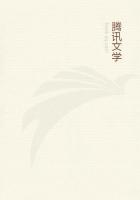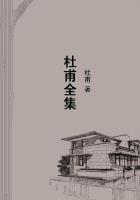To conclude this brief account, let us change the zoological setting and, as we have already spoken of the Sparrow, see what he can do as a builder. The ******st form of his nest is the great round ball of straw, dead leaves and feathers, in the fork of a few branches. It is costly in material, but can be set up anywhere, when the hole in the wall or the shelter of a tile are lacking. What reasons induced him to give up the spherical edifice? To all seeming, the same reasons that led the Osmia to abandon the Snail-shell's spiral, which requires a fatiguing expenditure of clay, in favour of the economical cylinder of the reed. By ****** his home in a hole in the wall, the Sparrow escapes the greater part of his work. Here, the dome that serves as a protection from the rain and the thick walls that offer resistance to the wind both become superfluous. A mere mattress is sufficient; the cavity in the wall provides the rest. The saving is great; and the Sparrow appreciates it quite as much as the Osmia.
This does not mean that the primitive art has disappeared, lost through neglect; it remains an ineffaceable characteristic of the species, ever ready to declare itself should circumstances demand it.
The generations of to-day are as much endowed with it as the generations of yore; without apprenticeship, without the example of others, they have within themselves, in the potential state, the industrial aptitude of their ancestors. If aroused by the stimulus of necessity, this aptitude will pass suddenly from inaction to action.
When, therefore, the Sparrow still from time to time indulges in spherical building, this is not progress on his part, as is sometimes contended; it is, on the contrary, a retrogression, a return to the ancient customs, so prodigal of labour. He is behaving like the Osmia who, in default of a reed, makes shift with a Snail-shell, which is more difficult to utilize but easier to find. The cylinder and the hole in the wall stand for progress; the spiral of the Snail-shell and the ball-shaped nest represent the starting-point.
I have, I think, sufficiently illustrated the inference which is borne out by the whole mass of analogous facts. Animal industry manifests a tendency to achieve the essential with a minimum of expenditure; after its own fashion, the insect bears witness to the economy of energy. On the one hand, instinct imposes upon it a craft that is unchangeable in its fundamental features; on the other hand, it is left a certain latitude in the details, so as to take advantage of favourable circumstances and attain the object aimed at with the least possible expenditure of time, materials and work, the three elements of mechanical labour. The problem in higher geometry solved by the Hive-bee is only a particular case--true, a magnificent case,--of this general law of economy which seems to govern the whole animal world. The wax cells, with their maximum capacity as against a minimum wall-space, are the equivalent, with the superaddition of a marvellous scientific skill, of the Osmia's compartments in which the stonework is reduced to a minimum through the selection of a reed.
The artificer in mud and the artificer in wax obey the same tendency:
they economize. Do they know what they are doing? Who would venture to suggest it in the case of the Bee grappling with her transcendental problem? The others, pursuing their rustic art, are no wiser. With all of them, there is no calculation, no premeditation, but simply blind obedience to the law of general harmony.















